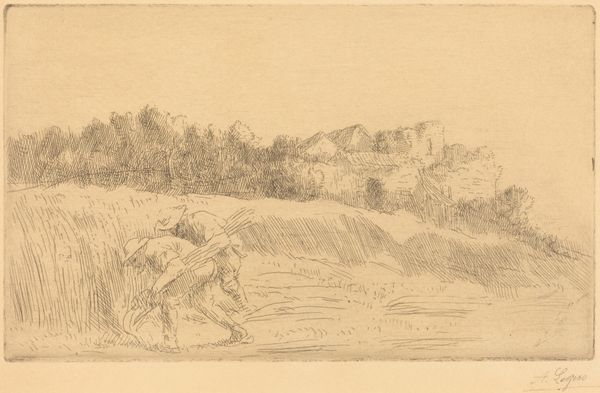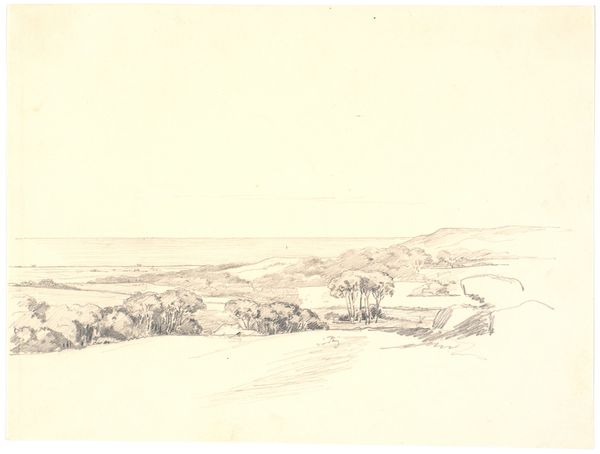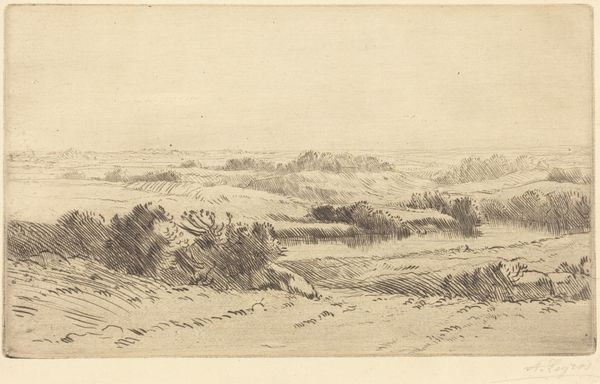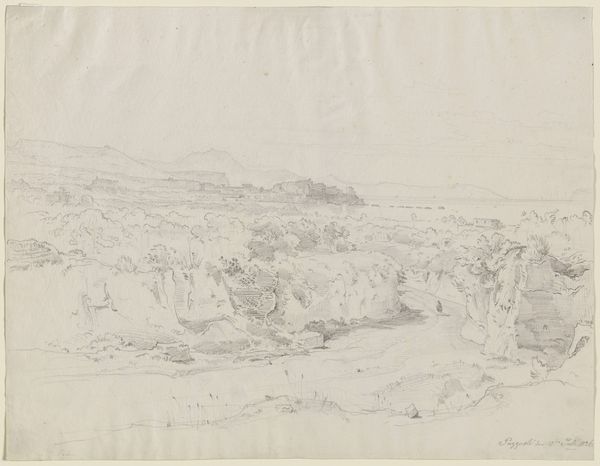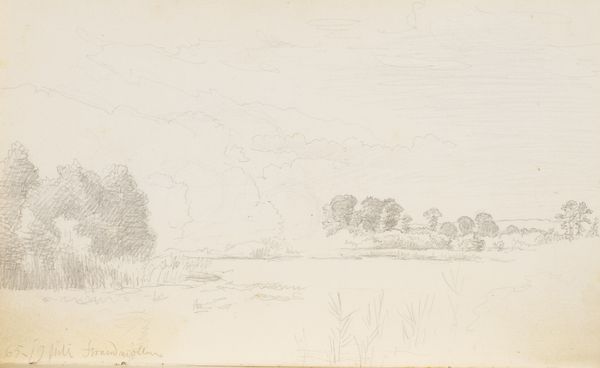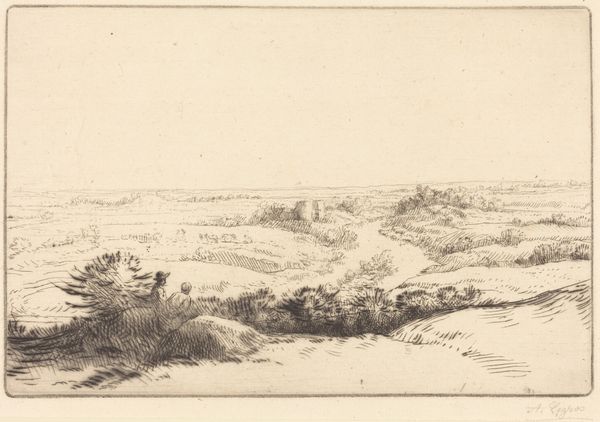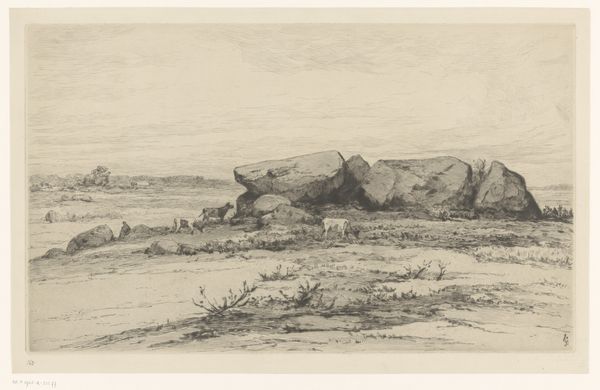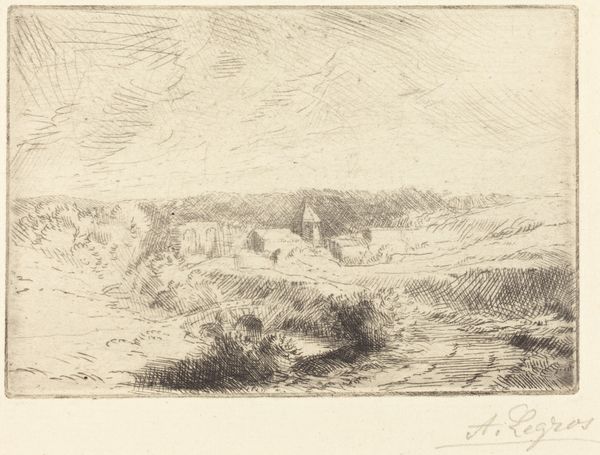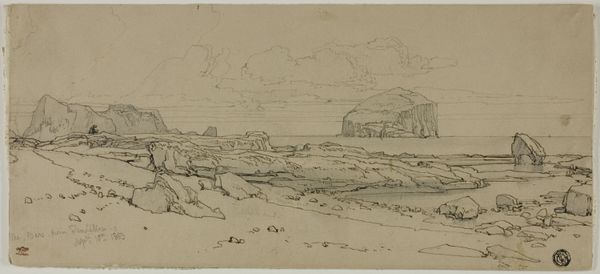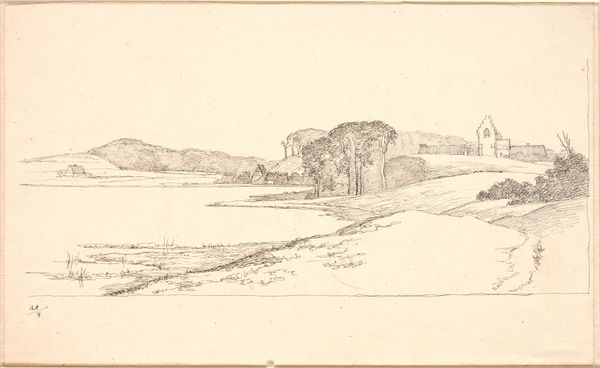
drawing, pencil
#
drawing
#
pen sketch
#
pencil sketch
#
landscape
#
etching
#
figuration
#
romanticism
#
pen-ink sketch
#
pencil
Dimensions: height 132 mm, width 210 mm
Copyright: Rijks Museum: Open Domain
Curator: Well, this drawing really pulls you in, doesn't it? I'm quite drawn to its stillness. Editor: Indeed. What we're looking at is titled "Landschap met burcht of klooster op hoge rots," which translates to "Landscape with castle or monastery on a high rock." It was created by Johannes Tavenraat, sometime between 1819 and 1881, and it's currently part of the Rijksmuseum's collection. What really strikes me is the implied weight, the palpable pressure, almost gothic. I get this feeling that nature is indifferent, while humans build these… fortresses. Curator: You know, it’s fascinating you use the word gothic, it's fitting. Looking at it from an art-historical lens, one immediately thinks of the Romantic movement – the almost obsessive interest in ruins, the sublimity of nature versus humanity, and this undeniable feeling of solitude. But, more than that, there's this fascination, across all of Europe at the time, for depicting and even idealizing their national identity, so you start asking "What is this artist wanting to tell us about being Dutch at this time?". Editor: Okay, interesting point. Now that you say it... Yes, there's something about this lone fortress that feels distinctly self-contained, stoic almost. Like a memory clinging to a crag. Though I'm still more drawn to the clouds. They give a beautiful sense of space and the light really enhances the romantic vibe, right? The way they sort of embrace that tiny...what is it a spire? A steeple? Curator: Precisely. Those high buildings that would have represented civic duty at the time, like some medieval declaration that God protects those who build on high... So many intertwined layers! It’s all beautifully composed. I wonder what audience Tavenraat was imagining encountering his work? A cultured patron perhaps or maybe an exhibit for public edification. Editor: It does spark an introspective feeling about life, time passing. Almost nostalgic, it brings a feeling of simple calm. I appreciate the way he's composed what's most important in the picture: the rock and fortress, but at the same time he lets the drawing flow more towards the front. I like to think I could stroll around that land. Curator: Definitely. What lingers for me is how this work reflects the social context of 19th-century artistic expression. It prompts me to ask who held the power to decide what constituted “art” and how such pieces functioned within those power structures. Editor: I'm glad we shared our time looking closer, that kind of made it alive to me.
Comments
No comments
Be the first to comment and join the conversation on the ultimate creative platform.
